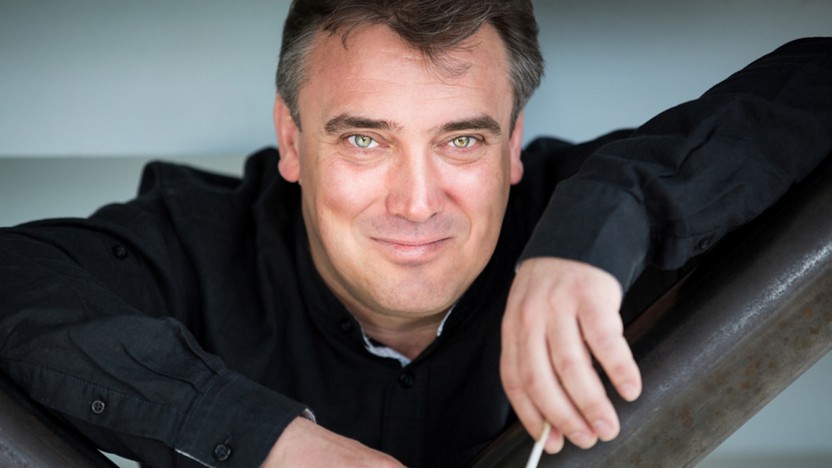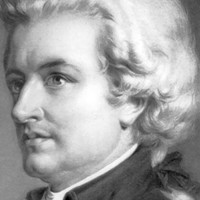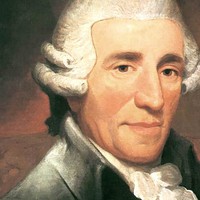Haydn’s Surprise Symphony


George Perle’s dual pursuits as composer and theorist were inextricably linked, and fostered a singular body of work that ranks among the most valuable contributions to music in the twentieth century. Perle was one of the first composers in this country to take interest in the innovations of Schoenberg, Webern, and Berg. But rather than strictly follow those composers’ twelve-tone method, Perle devised a system of “twelve-note tonality,” which incorporated elements of serialism with the fundamentals of tonal music (i.e., the concept of a composition’s being rooted in a home key). (In more candid moments, Perle suggested half-jokingly that he developed his compositional language based on a misunderstanding of Schoenberg, et al.) His catalogue of solo, chamber, and orchestral music represents an essential part of the twentieth-century American repertoire.
Perle’s compositional sensibility resulted in music that was intellectually stimulating and emotionally immediate in equal measure. The importance to Perle of the visceral human element in complex musical structures is equally evident in his theoretical work: most famously, his groundbreaking analysis of the music of Alban Berg, which included a revelatory decoding of that composer’s Lyric Suite. Confronting one of the most opaque works in the literature, Perle revealed the Lyric Suite to be an encoded love letter to Berg’s mistress, Hanna Fuchs-Robettin, rife with melodic ciphers (e.g., the combination of their initials, H-F-A-B—German notation for B-F-A-B-flat, the work’s germinal cell) and numerological considerations.
George Perle’s Sinfonietta No. 1 was commissioned and premiered by The Saint Paul Chamber Orchestra in 1988, on a program that also featured Mozart’s Piano Concerto in F Major, K. 459: an apt pairing, for, filtered through Perle’s unmistakably modern idiom, the Sinfonietta harkens back to the Classical era. Its three-movement (fast-slow-fast) format, delicate orchestration, and, at times, its harmonic language evoke the music of the eighteenth century. A review in the St. Paul Pioneer Press noted: “The first movement is a work of Mozartean elegance, its spiky harmonies notwithstanding. And the last is filled with gentle humor, not the least in its valedictory reference to the music of the opening movement.” As with many of Mozart’s concerti, the central slow movement here is the Sinfonietta’s emotional centerpiece, featuring a tender dialogue between solo oboe and clarinet.
Patrick Castillo ©2014

Wolfgang Amadeus Mozart, the onetime child prodigy who had dazzled audiences all over Europe, found himself in an unexpected predicament in his early twenties: he was stuck in his hometown of Salzburg. He resigned from the court of the local Archbishop in 1777 and set out with his mother in search of new employment, but his visits to Mannheim and Paris failed to produce any real prospects. At least he came away from his time in Mannheim, home to one of the world’s finest orchestras, with a new arsenal of brilliant ensemble effects.
Mozart returned to Salzburg in 1779 and begrudgingly resumed working for the Archbishop. On the side, he cultivated his own private circle of musicians and patrons, for whom he wrote symphonies, concertos, serenades, and other entertaining diversions. We don’t know exactly the circumstances that led to Mozart composing the Sinfonia concertante for violin and viola in 1779, but we can presume that it was some social event in Salzburg. Mozart, a fine violinist and violist, would surely have played one of the solo parts.
The idea of a concerto for multiple soloists had been around for nearly a century (in the form of the concerto grosso), but the sinfonia concertante was a trendy new approach flourishing in places like London, Mannheim, and Paris — where Mozart actually wrote his first example for a quartet of soloists. In the Sinfonia concertante for violin and viola, Mozart addressed the natural imbalance in projection by calling for the viola to be tuned a half-step higher than normal, increasing the alto instrument’s power. (Modern instruments and metal strings have alleviated this need, so today’s soloists often forgo the transposition.)
One of the sounds Mozart picked up in Mannheim was a long crescendo that gathers strength over a constant bass note, a device so characteristic of the local composers that it was dubbed the “Mannheim roller.” A terrific example is the final climax of the tutti exposition that precedes the arrival of the soloists.
The central Adagio movement unwinds its haunting main theme in skeins of long, singing phrases that weave between the two solo instruments. As in the first movement, the two soloists share a fully composed cadenza, imparting a chamber-music intimacy to this orchestral score. The finale continues the impressive display of ensemble colors, including prominent passages for the horns and oboes, all in support of quick-witted banter between the soloists.
Aaron Grad ©2024
John Corigliano ranks among his generation’s most acclaimed American composers. His numerous honors include a Guggenheim Fellowship, Grawemeyer Award, the Pulitzer Prize for his Symphony No. 2, two Grammy Awards for Best Contemporary Composition, and an Academy Award for his film score to The Red Violin.
Though establishing his reputation with his earliest works’ conservative idiom (complemented by his oft-professed imperative that modern music remain accessible), Corigliano has cultivated a technique as rigorously progressive as it is inviting. Joshua Bell has praised Corigliano’s language as “unique and unmistakable, yet rooted in the grand traditions of the past. While his music is often harmonically complex and rhythmically challenging, he also dares to write a simple, beautiful melody.”
Corigliano composed Snapshot: Circa 1909 in 2003 for the Elements Quartet.
When the Elements Quartet asked me to write a piece inspired by a photograph, I immediately thought of one I have had since I was a child. It was taken in Greenwich Village in my grandparents’ Sullivan Street apartment, which I have only seen in photos.
The photographer came to do a group shot of my grandparents, whom I never met, and their six children. After taking that picture, the photographer was coaxed into doing a shot of my father and his brother Peter performing on violin and guitar.
The picture has never ceased to move me. My father looked about eight years old, wearing knickers and earnestly bowing his violin, while my uncle, then a teenager, held a guitar in an aristocratic position and stared at the camera.
In the short quartet inspired by the photo, the second violin plays a nostalgic melody, while the other strings pluck their instruments in a guitar-like manner. This solo is obviously the boy violinist singing through his instrument. After the melody is completed, however, the first violin enters, muted, in the very highest register. In my mind, he was playing the dream that my eight-year-old father must have had—of performing roulades and high, virtuosic, musing passages that were still impossible for him to master. This young violinist grew into a great soloist—my father, John Corigliano, concertmaster of the New York Philharmonic for over a quarter century. He, as an adult, performed the concerti and solos that as a child he could only imagine.
The two violinists, boy and dream, join together at the end as the guitar sounds play on.
Patrick Castillo ©2014

After Franz Joseph Haydn’s longtime patron Prince Nikolaus Esterházy died in 1790 and his successor disbanded the court orchestra, Haydn was left with a reduced salary and more freedom than he had enjoyed in decades. Seizing the opportunity, a German impresario active in London enticed Haydn to England with a generous contract for the 1791.92 season. Besides a busy schedule of socializing and teaching, Haydn prepared music for the spring concert season with Salomon’s 40-piece orchestra, which offered mixed programs of symphonies, concertos, arias and chamber music each Monday in London’s Hanover Square Rooms. Haydn ended up presenting six new symphonies on that trip and six more during a follow-up visit in 1794-95, capping his extraordinary lifetime of work in a genre that he, more than any other composer, shaped into its everlasting form.
London audiences liked their music as splashy and colorful as possible, and Haydn responded by stuffing his “London” symphonies with extra drama and many notable, nickname-worthy effects. None is more memorable than the “Surprise” that gives the Symphony No. 94 its name, but even before that signature passage in the Andante, this symphony starts building anticipation with a noble introduction and an arrival at the fast body of the first movement that deceptively masks the home key for a moment before landing on it hard with the full orchestra at a forte dynamic. That surprise, though, is only a warm-up; you can’t miss the real punch line in the second movement, which somehow never seems to lose its impact, even for listeners who are in on the joke.
In the Minuet and Trio, passages of sophisticated counterpoint and unexpected phrasing keep this hearty dance music on its toes. The finale uses one of Haydn’s favorite tricks of starting a movement at a whispered piano dynamic to set up a big arrival, and this example draws out the suspense longer than most, waiting until the 38th measure before the gratifying wallop of a forte downbeat played by the entire orchestra.
Aaron Grad ©2024
Get driving directions and find nearby parking.
Find dining options close to the venue.
View seating charts to find out where you'll be seating.
Get driving directions and find nearby parking.
Find dining options close to the venue.
View seating charts to find out where you'll be seating.
